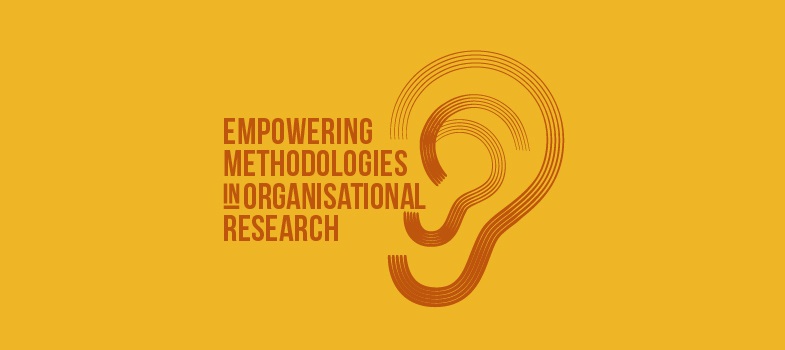7 Digital visual methods: photography and video
Introduction
The ubiquity of digital smart devices with photo and video capabilities makes it easier than ever to produce visual
Photography and video are more complex and problematic than they may at first appear. Their power and potential should not be underestimated: knowing why, when and how to use them in research is essential to ensuring that they can empower rather than disempower. Digital visual methods raise specific ethical considerations, so it is important to understand what photographic representation is – and is not – to appreciate the role and responsibilities of the visual researcher, before introducing specific visual methods that can be used in empowering ways.
Now that smart devices enable people to capture everything and anything in everyday life, photography and video are taken for granted. ‘Taking’ and ‘sharing’ digital images is easy, encouraged and increasingly socially acceptable. Critically, visual researchers need to understand this in order to appreciate the power of representation and the potential for misrepresentation. A photograph is merely a representation of a particular moment in a particular place from the viewpoint of the photographer – it is basically a picture, likeness, or facsimile obtained by photography (Clarke, 1997). But all photographic images are made in specific historical, cultural, social and technical contexts that give them meaning (Clarke, 1997). Those contextual factors cannot all be depicted in images, and so photographic images take on new and different meanings depending on the context(s) in which they are reproduced (i.e. printed or shared online) and viewed (or, more accurately, read – see Berger, 1972; Clarke, 1997).
Photographic and video images are thus open to interpretation. Visual researchers must be mindful of the possibilities of interpretation, reinterpretation and misinterpretation (particularly when shared online), and the consequent power that they hold over participants when producing images of their everyday lives.
Consider the ‘selfie’ made by the prject researcher, Sumeet, with a research participant – a share-ride driver.
What do you imagine he is attempting to show the viewer or reader, and what do you see? What might other readers see? Whilst an uncritical view of the photograph might see two happy people, a critical reader might see a power imbalance between the two subjects: the researcher who is in control of the camera and the participant who is having his image ‘taken’. The key point to note here is that this image, and all other images, are open to interpretation. Despite Sumeet’s good intentions to represent himself and the participant together, some readers might not see the situation the way he sees it.
When reading photographs such as this without an understanding of its various contextual factors, the reader is left to interpret the images. Furthermore, use or
Reconsidering photography and video as being ‘made’ rather than ‘taken’ therefore offers a new way of thinking why, when and how to use photographic methods for research. As discussed in Section 4, truthfulness, or
Photographs and videos are socially constructed artefacts: if they are used for research, photojournalism or any other means, Azoulay proposes that a civil contract should exist between the photographer and the photographed (2014). Unfortunately, in a world saturated with making, taking and sharing digital images, any such civil contract is prone to abuse. Images shared online can be appropriated in multiple ways to produce infinite interpretations – internet ‘memes’ are just one example. In the digital age, the ethical responsibilities of visual researchers to account for the specific historical, cultural, social and technical contexts of the images they make are more prescient than ever.
This ethical dilemma of producing truthful representations of research situations and subjects is something that contemporary visual researchers have sought to address by developing appropriate methodologies. To represent participants’ truths is key. This can be achieved through either:
- showing photographs or videos to participants and discussing them to understand and report their interpretations of those images
- empowering participants to make and discuss the images themselves.
These two practical options are commonly known as ‘photo elicitation’ and ‘photo voice methods’, respectively.
Photo elicitation is a visual method of making and discussing images with participants that is particularly suited to understanding how participants make sense of their everyday practices (Harper, 2002). It is particularly suited to understanding why and how people do things such as work in socially and culturally specific ways. After making, selecting and editing images, the researcher shows them to participants and asks them to discuss what they see. Whilst this enables the researcher to gain a deeper understanding of participants’ practices from how they talk about those images, the fact remains that the images were made from the researchers’ perspective. In short, participants in photo elicitation are asked to interpret how the researcher sees them and their practices – not necessarily how they see themselves. Although it is empowering in the sense that it enables participants to give their own meanings to practices that might otherwise be difficult to discuss, the outcomes of any photo elicitation will ultimately always be as having first been seen through the eyes of the researcher.
The photo-voice method addresses that central concern of whose eyes the research is being seen through by making participants the photographers or videographers. Participants are either given cameras or encouraged to use their own smart devices to tell their own stories (Warren, 2005). Whilst commonly used to ‘give voice’ to participants from marginalised communities (Warren, 2019), photo-voice has been critiqued as producing inflated claims of empowering participants (Buckingham, 2013). Azoulay’s (2014) observation that any photograph is both true and false is seemingly inescapable. Nevertheless, photography can engage the researcher, participants and readers in sensory ways through images, which text cannot always do (Bell and Davison, 2013; Warren, 2019). Photographic and video methods, when used appropriately, can offer insights into embodied practices and everyday situations that otherwise would go undocumented in a research project.
Finally, it is worth noting that due to the well-understood problems of visual representation, specific institutional ethical policies, procedures and guidelines for responsible conduct should be followed. Besides adhering to ethical protocols for human research, visual studies usually also involve additional steps to gaining participant consent to make and use their images. For example, images of people cannot be anonymised in the same way textual data can be. Hence, participants need to be aware of and feel comfortable with being identifiable. Empowering participants to co-create images, represent themselves and discuss or present the images made can go some way to overcome any concerns they have about how images will be used. Empowering methodology therefore involves going beyond merely ‘giving voice’ to participants and instead invites consideration of how to co-construct knowledge in ways that enable greater ‘multivocality’ (Hendry et al. 2018).


